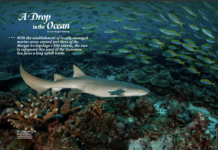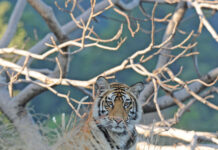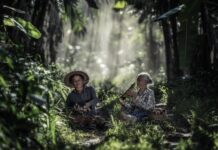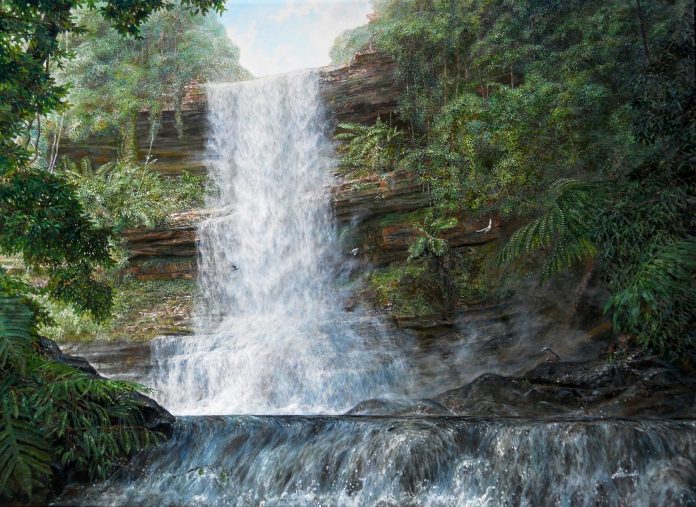
Depicting Malaysia’s natural heritage through painting
By Wan Phing Lim
When the boundaries between art and photography are blurred and reality and imagination mixed, the results are seen in the paintings of Adrian Ho, a Malaysian artist who rose to fame at the Singapore Biennale 2013 with his two paintings Fruits of Life and Full Production.
Speaking from his home studio and art gallery in Papar, Sabah, the painter’s background of growing up in Borneo has no doubt influenced his artworks. In this part of East Malaysia, scenes of tropical rainforests, palm oil plantations, waterfalls, rivers, paddy fields, water buffaloes and wooden village houses surround him day and night. “I am definitely influenced by my surroundings, with its kampung houses and long boat rides,” he says. Born in 1967 in a town called Penampang, the native Sabahan was actually trained as an architect before deciding to wield the paintbrush for an actual career.
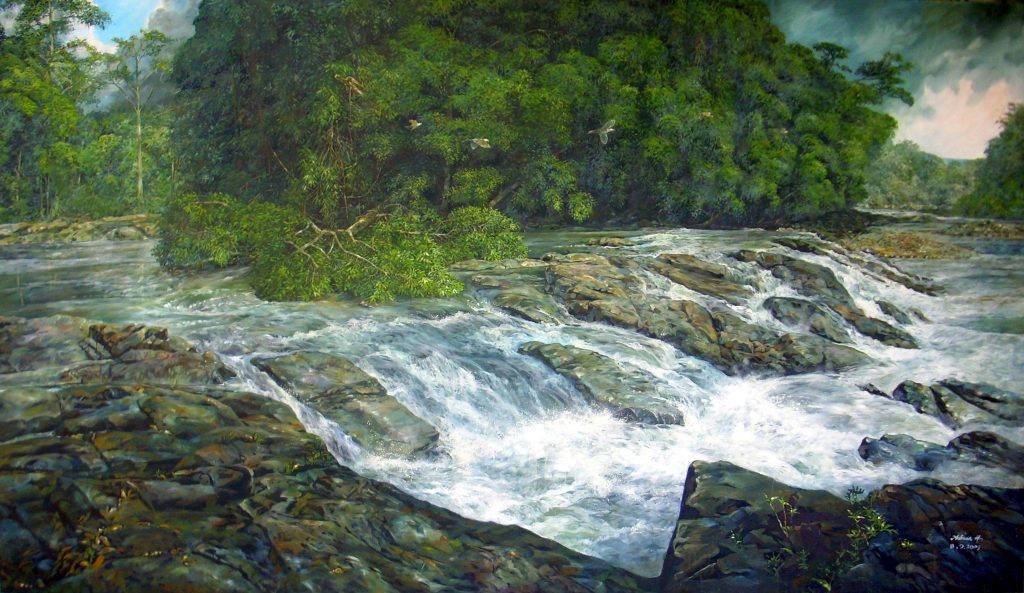
Papar is a scenic agricultural town with a population of about 130,000 people. Also known as the “Rice Bowl of Sabah”, the quiet town with its old colonial shophouses, railway bridge, meandering rivers and mangrove trees have no doubt played a huge part in his love for nature, which seeps through his work.
His inspiration to paint came at an early age from his father, Richard Ho, who was an art teacher at St Joseph, a secondary school in Papar which Adrian himself attended. “Digging my roots further back, I even found out that my grandfather, the late Ho Tien Sang was a local portraitist of Chinese leaders,” he says. “It wasn’t until the Japanese occupation of Malaya in 1942 when his business was banned.”
Though he does not remember having a eureka moment as a child when he knew he wanted to be a painter, Adrian did win a silver in the 13th World Children Art Competition in 1983. It was organised by Japan’s Nippon Television Networks Cultural Society and it was among many other art competitions he won.
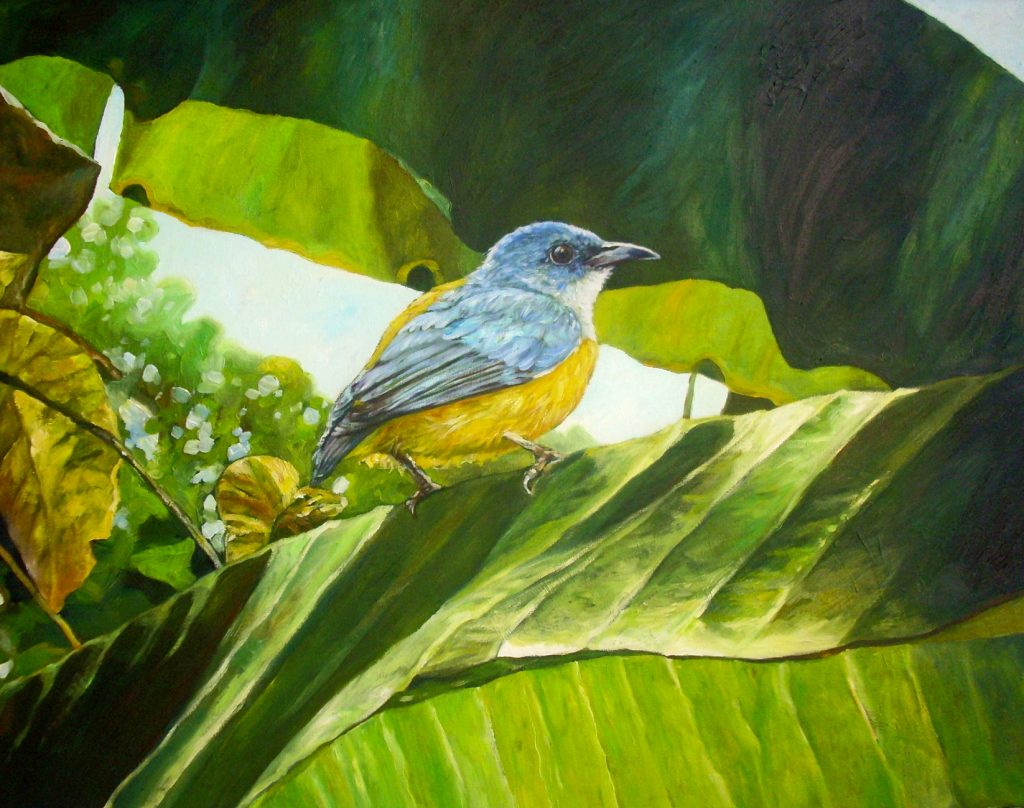
Picking up the paintbrush
Adrian is grateful for his artistic foundations built during his architecture days, when he had to pick up theories and history of art while studying for his Bachelor of Architecture at the University of Western Australia in Perth; after completing his diploma in University Teknologi Malaysia (UTM) in Skudai, Johor.
Unlike architecture, in art he is free to do all things without the constraint of building regulations, land laws and such. “As a visual artist I have the freedom to create a world, so I allow my intuition and imagination to be seen in my paintings,” he says.
His passion is for the natural landscape of Malaysia, particularly Sabah. “I can spend an entire day outdoors, and one of my favourite places is the Canopy Walk at the Poring Hot Springs. It is in Ranau and I love going there to study the rainforest in detail. The other place I love is Sirung Sumandak, a seven-tiered waterfall near a town called Bongawan,” he adds.
It is his love for nature and desire to capture the changing environment that led to his two commissions, Fruits of Life and Full Production at the Singapore Biennale 2013. The biennale, which carried the theme “If The World Changed”, was an invitation to artists to respond to and reconsider the worlds we live in, as well as the one we want to live in.
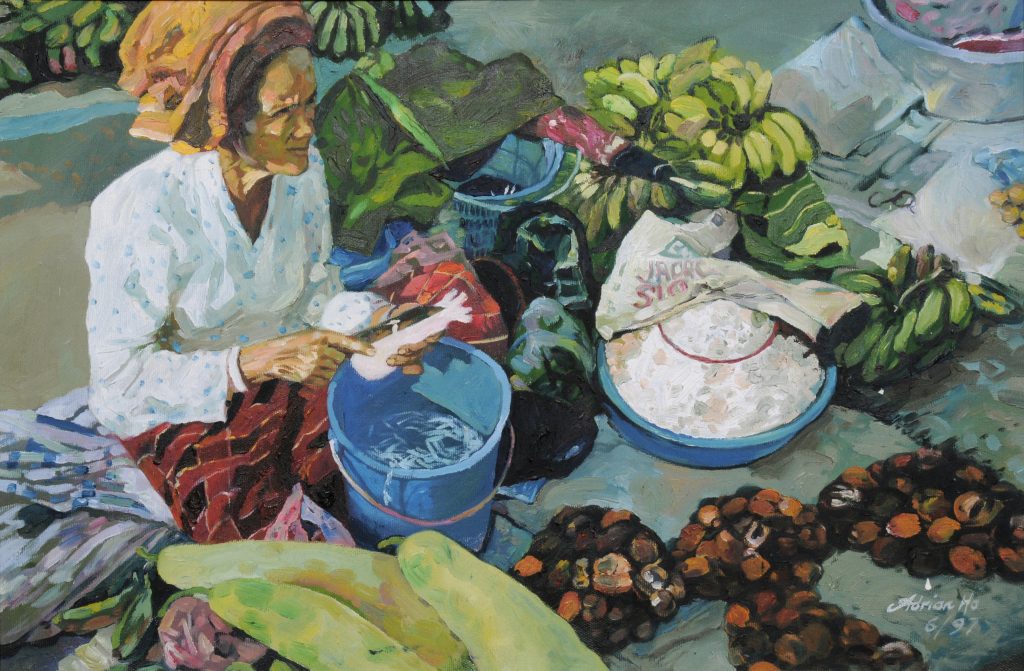
Displayed at the Singapore Art Museum between October 2013 and February 2014, the two paintings were hung facing one another on opposite sides of the gallery. Fruits of Life depicts orangutans swinging in their natural habitat in the rainforest while Full Production contrasts it with a palm oil plantation releasing a cloud of vapour into the air amidst greenery.
When viewers are confronted with these changing scenes and forced to see the reality of the situation, Adrian presents the issue as a choice for them to make regarding which landscape they would prefer to see in their world, and what price they are willing to pay for it. “The beauty of the great Malaysian outdoors inspires but also saddens me with its constant struggle with annihilation,” he states on the official Biennale folio.
He adds: “In my art I seek the purity of the great Malaysian natural heritage and in nature I find a redeeming sense of hope, endurance, peacefulness and affirmation which I seek to share with others.”
Painting for future generations
Today, Adrian has private collectors calling from as far away as Boston in the United States to commission and buy his paintings. Constantly travelling to Kuala Lumpur, Singapore and Hong Kong where his representatives and galleries are, the father of three plans to keep up his passion for painting.
“When I paint, I use side sketches, photographs, memory and a lot of imagination,” he says. “A photographer once told me that he could take a thousand pictures and still would not capture the kind of scenery I draw.”
Adrian cites the Hudson River School artists as one of his early influences, as they were heavily in tune with their outdoor surroundings and ahead of their time in environmental-themed art. He also professes his love for British contemporary artists like Lucian Freud and Francis Bacon. “Lucian Freud was a great artist,” he says. “I have a feeling that people were not able to pigeonhole him, and I think that is a sign of a good artist – when your work speaks differently to different people. That is why I encourage people to interpret my paintings for themselves. I do include a secret message or clue here and there, but it’s for them to find out.”
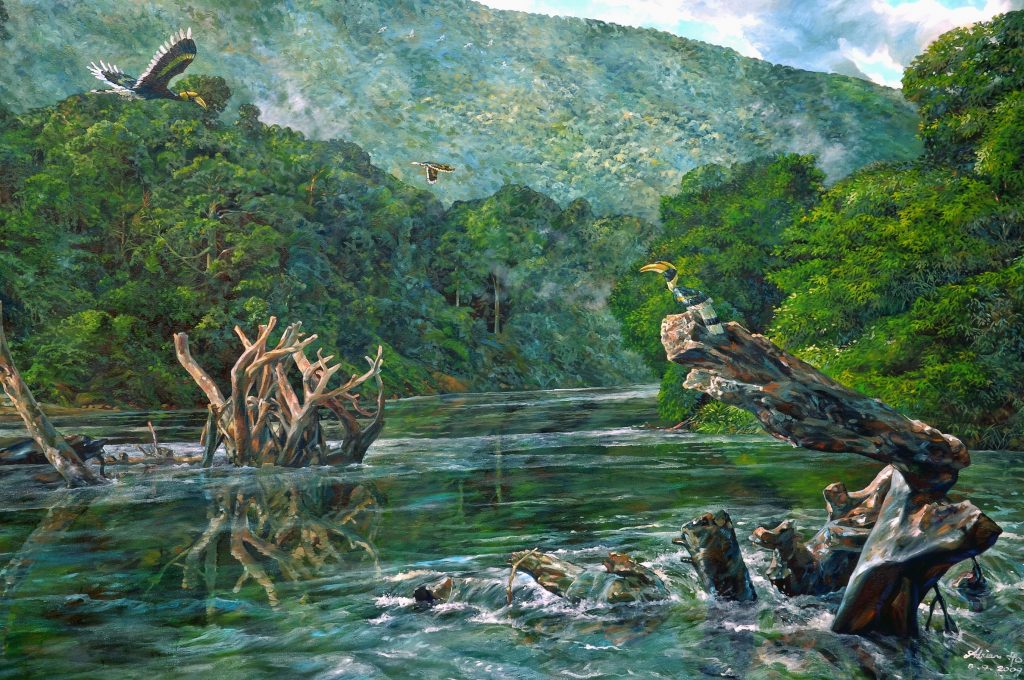
Adrian has dabbled in Chinese brush painting and was exposed to all techniques at university – even engraving – but in the end he stuck to oil on canvas, which has been his preferred technique since the early 1980s. “I love the evidence that a painter leaves behind on canvas, and that is why I use obvious and heavy brush strokes in my paintings,” he says. His children, Jessica, 12, Jason, 10 and Jacinta, 7 are taking up art spontaneously and Adrian says he does guide them in theoretical exercises.
“My ultimate gig would be to appear at the Venice Biennale or the Guggenheim Art Museum in New York, where people can look at my art and it can also speak to them meaningfully in return,” he explains. If he could travel anywhere in the world to paint, Adrian would head to the Redwood Park in California to admire the drive-through Chandelier Tree, which is said to be over 2,400 years old. He adds: “The Iguazu Falls in Argentina would be great, too. Just to stand there would be amazing and my imagination would go crazy. Or I could just stay put in Borneo, the greatest place in the world.”
For more stories and photos, check out Asian Geographic Issue 116.





